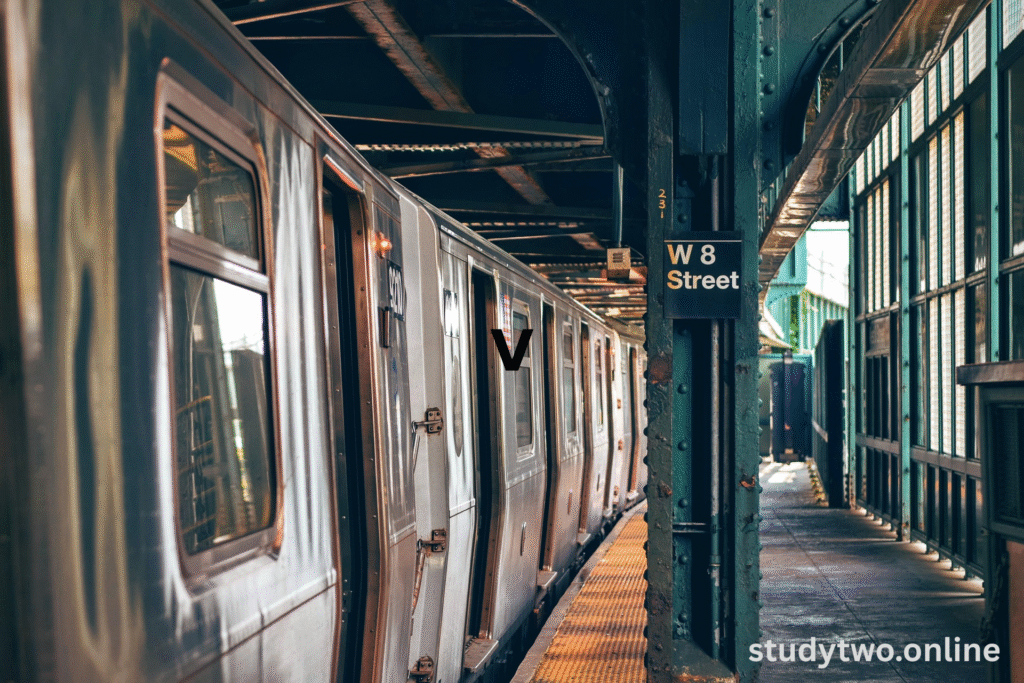Redmond Technology Station Overview
Redmond Technology Station, a major stop along Sound Transit’s 2 Line light rail, is redefining public transit in Redmond, Washington. In April 2024, opened as part of the East Link expansion, this modern transit center connects Microsoft’s busy campus, adjacent neighborhoods, and the broader Seattle area, promoting economic growth and green mobility. Redmond Technology Station remains a lifeline for commuters, tech industry professionals, and residents heading into 2025, its latest bridge opening and future expansion adding to its significance. This blog article delves into the station’s characteristics, importance, community influence, and emerging trends determining its direction in 2025.

What Is Redmond Technology Station?
Redmond Technology Station at 15590 N.E. 36th St. is a contemporary light-rail facility on Sound Transit’s 2 Line, which forms part of the East Link expansion linking South Bellevue to Redmond. Finished in September 2024, the station is an essential transit point for Redmond’s Overlake community, site of Microsoft’s worldwide headquarters and a vibrant tech community. The station has a modern design, pedestrian-oriented facilities, and a 1,100-foot pedestrian walkway spanning Microsoft’s east and west campuses over SR 520, opened in April 2024.
Some of the main features of the station are:
-
Light Rail Access: Branch of the 2 Line, providing direct, frequent service to South Bellevue and Downtown Redmond, as of May 2025, via a 3.4-mile extension.
-
Pedestrian Bridge: An innovative, lightweight span of more than 20 roadway lanes, improving safety and connectivity for pedestrians.
-
Multimodal Integration: Bike racks, bus connections, and parking facilities accommodate varied commuting requirements.
-
Sustainability: Efficient energy design and closeness to tech employment reduce personal vehicle dependency.
-
Accessibility: ADA-accessible facilities promote inclusion for everyone on board.
Why Redmond Technology Station Matters in 2025
Redmond Technology Station is not just a transit station; it’s a driver of city growth and green expansion in one of Washington’s most rapidly expanding cities. Here’s why it’s important:
1. Increasing Regional Connectivity
The station links Redmond to Seattle’s larger transit system, shortening commutes for residents and tech employees. Its alignment with the 2 Line enables easy access to Bellevue and Downtown Seattle in the near future.
2. Enabling the Tech Economy
Sited adjacent to Microsoft’s campus, the station provides access for thousands of workers, stimulating productivity and drawing talent to Redmond’s technology center.
3. Encouraging Sustainable Mobility
By providing a dependable substitute for car travel, the station minimizes traffic jams and greenhouse gas emissions, supporting Redmond’s sustainability objectives.
4. Moving Urban Development
The station has driven development, including AvalonBay’s proposed Avalon Redmond Technology Station (ARTS) project, which would add 2,000–2,500 housing units in the area.
5. Facilitating Community Access
Pedestrian bridge and multimodal connections enhance job, education, and recreation access, which strengthens Redmond’s community fabric.
Features and Infrastructure of Redmond Technology Station
Redmond Technology Station is conceived for efficiency, accessibility, and user experience:
-
Station Design: A contemporary, open design with unambiguous signage, generous lighting, and weather-protected platforms ensures passenger comfort.
-
Pedestrian Bridge: Designed by T.Y. Lin International, this light structure employs minimal materials for maximum efficiency, bridging Microsoft’s campuses and enhancing safety.
-
Transit Integration: The station connects to King County Metro buses and bike-sharing initiatives, facilitating last-mile connectivity.
-
Technology: Real-time arrival displays and mobile ticketing via Sound Transit’s app enhance the commuter experience.
-
Sustainability Features: Solar-powered lighting and native landscaping reduce environmental impact.
Community and Economic Impact in 2025
Redmond Technology Station is transforming the Overlake area and beyond:
1. Economic Growth
The station supports Redmond’s tech-driven economy by improving access to major employers like Microsoft. It also attracts new businesses to the area, boosting local commerce.
2. Housing and Development
Such projects as AvalonBay’s ARTS underscore the station’s ability to drive transit-oriented development, meeting housing needs in an expanding area.
3. Decreased Congestion
By encouraging light rail ridership, the station reduces traffic on SR 520 and NE 36th St., saving travel time for all users of these roads.
4. Community Linkages
The pedestrian bridge and station improve accessibility to Overlake Village, Marymoor Park, and other community amenities, creating a lively, walkable community.
5. Job Generation
Development and operation of the station have provided jobs, from engineers to transit workers, adding to Redmond’s economic health.
Trends Affecting Redmond Technology Station in 2025
As part of Sound Transit’s aggressive growth, Redmond Technology Station is shaped by larger transit and urban trends:
1. Transit-Oriented Development (TOD)
The station is a hub for TOD, with residential and commercial developments planned to most conveniently promote walkability and transit.
2. Smart City Integration
Redmond’s investment in intelligent city technologies, like IoT-based traffic management, is synergistic with the station’s position within an interconnected urban environment.
3. Green Transportation
The station enhances Washington’s climate agenda by enhancing low-carbon modes of transportation, lowering greenhouse gas emissions.
4. Technology-Supported Transit
Artificial intelligence-based scheduling and real-time data analysis, employed by Sound Transit, maximize the reliability of service within the station.
5. Regional Growth
The 2 Line expansion to Downtown Redmond in May 2025 and beyond to Seattle confirm the station’s place in an expanding transit system.
Benefits of Redmond Technology Station
The station provides many benefits for commuters, businesses, and the community:
-
Time Savings: Quick, efficient light rail travel saves commuting time compared with driving in traffic.
-
Cost Efficiency: Inexpensive fares and lower fuel costs make the station an affordable option for commuters.
-
Environmental Impact: Reduced use of vehicles minimizes air pollution, aligning with Redmond’s sustainability plans.
-
Accessibility: Multimodal accessibility and ADA amenities provide inclusion for users of all types.
-
Economic Boost: The station stimulates investment and employment in the Overlake district.
Challenges and Solutions
Redmond Technology Station is a success story, but it has challenges:
-
Parking Limitations: Limited parking could discourage some commuters.
Solution: Sound Transit promotes bus, bike, and rideshare use to minimize parking. -
Initial Delays: Timeline was affected by construction delays.
Solution: Proactive communication and phased openings by Sound Transit reduced disruptions. -
Public Awareness: Some residents are not aware of the station’s advantages.
Solution: Marketing campaigns and community outreach encourage usage. -
Scalability: Expanding ridership necessitates capacity planning.
Solution: Sound Transit is increasing service frequency and fleet size.
How to Use Redmond Technology Station
Commuters can get maximum use out of the station with these tips:
-
Plan Your Trip: Use Sound Transit’s trip planner or mobile app to check schedules and fares.
-
Purchase Tickets: Buy tickets via the app, ticket machines, or ORCA cards for seamless travel.
-
Explore Connections: Combine light rail with buses or bikes for last-mile travel.
-
Use the Bridge: Access Microsoft’s campuses or Overlake Village via the pedestrian bridge.
-
Stay Updated: Follow Sound Transit’s website or social media for service alerts.
The Future of Redmond Technology Station
Looking forward, Redmond Technology Station is well-positioned for future growth:
-
2 Line Expansion: The May 2025 Downtown Redmond extension includes two stations, further improving connectivity.
-
Development Boom: Future TOD projects will revitalize Overlake as a more dense, transit-oriented center.
-
Smart Transit: Integration with smart city tech will optimize service efficiency.
-
Sustainability Leadership: The station will enhance Redmond’s net-zero ambitions with increased low-carbon transit.
-
Regional Integration: Future links into Seattle’s Link system will position the station as a regional gateway.
Conclusion
Redmond Technology Station is a pillar of Redmond’s transit and economic destiny, bringing communities together, facilitating the tech sector, and encouraging sustainable transportation. With its sleek design, pedestrian bridge innovation, and position in the Sound Transit 2 Line, the station raises the quality of life for 2025 residents and workers. As Redmond expands, the station will continue to be an epicenter of innovation and connectivity, fueling success in one of Washington’s most vibrant cities.
